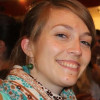Short communication: Development of an equation for estimating methane emissions of dairy cows from milk Fourier transform mid-infrared spectra by using reference data obtained exclusively from respiration chambers
- Vanlierde, A. , Soyeurt, H. , Gengler, N. , Colinet, F. . , Froidmont, E. , Kreuzer, M. , Grandl, F. , Bell, M. , Lund, P. , Olijhoek, D. . , Eugene, M. , Martin, C. , Khula, B. & Dehareng, F. (2018). Short communication: Development of an equation for estimating methane emissions of dairy cows from milk Fourier transform mid-infrared spectra by using reference data obtained exclusively from respiration chambers. Journal of Dairy Science, 101: (8), 7618-7624.
| Type | Journal Article |
| Year | 2018 |
| Title | Short communication: Development of an equation for estimating methane emissions of dairy cows from milk Fourier transform mid-infrared spectra by using reference data obtained exclusively from respiration chambers |
| Journal | Journal of Dairy Science |
| Volume | 101 |
| Issue | 8 |
| Pages | 7618-7624 |
| Date | August 2018 |
| Abstract | Evaluation and mitigation of enteric methane (CH4) emissions from ruminant livestock, in particular from dairy cows, have acquired global importance for sustainable, climate-smart cattle production. Based on CH4 reference measurements obtained with the SF6 tracer technique to determine ruminal CH4 production, a current equation permits evaluation of individual daily CH4 emissions of dairy cows based on milk Fourier transform mid-infrared (FT-MIR) spectra. However, the respiration chamber (RC) technique is considered to be more accurate than SF6 to measure CH4 production from cattle. This study aimed to develop an equation that allows estimating CH4 emissions of lactating cows recorded in an RC from corresponding milk FT-MIR spectra and to challenge its robustness and relevance through validation processes and its application on a milk spectral database. This would permit confirming the conclusions drawn with the existing equation based on SF6 reference measurements regarding the potential to estimate daily CH4 emissions of dairy cows from milk FT-MIR spectra. A total of 584 RC reference CH4 measurements (mean ± standard deviation of 400 ± 72 g of CH4/d) and corresponding standardized milk mid-infrared spectra were obtained from 148 individual lactating cows between 7 and 321 d in milk in 5 European countries (Germany, Switzerland, Denmark, France, and Northern Ireland). The developed equation based on RC measurements showed calibration and cross-validation coefficients of determination of 0.65 and 0.57, respectively, which is lower than those obtained earlier by the equation based on 532 SF6 measurements (0.74 and 0.70, respectively). This means that the RC-based model is unable to explain the variability observed in the corresponding reference data as well as the SF6-based model. The standard errors of calibration and cross-validation were lower for the RC model (43 and 47 g/d vs. 66 and 70 g/d for the SF6 version, respectively), indicating that the model based on RC data was closer to actual values. The root mean squared error (RMSE) of calibration of 42 g/d represents only 10% of the overall daily CH4 production, which is 23 g/d lower than the RMSE for the SF6- based equation. During the external validation step an RMSE of 62 g/d was observed. When the RC equation was applied to a standardized spectral database of milk recordings collected in the Walloon region of Belgium between January 2012 and December 2017 (1,515,137 spectra from 132,658 lactating cows in 1,176 different herds), an average ± standard deviation of 446 ± 51 g of CH4/d was estimated, which is consistent with the range of the values measured using both RC and SF6 techniques. This study confirmed that milk FT-MIR spectra could be used as a potential proxy to estimate daily CH4 emissions from dairy cows provided that the variability to predict is covered by the model. |
| Fichier | |
| Authors | Vanlierde, A., Soyeurt, H., Gengler, N., Colinet, F. ., Froidmont, E., Kreuzer, M., Grandl, F., Bell, M., Lund, P., Olijhoek, D. ., Eugene, M., Martin, C., Khula, B., Dehareng, F. |



